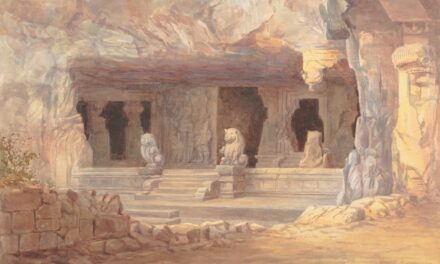Francisco de Goya y Lucientes was born on 30th March 1746 in the small town of Fuendetodos, located in the province of Zaragoza, Spain. He was the son of a master gilder, which likely influenced his early exposure to the world of art and craftsmanship. Goya’s family moved to Zaragoza when he was a child, where he began his formal education in art.
His early training included an apprenticeship with the painter José Luzán, who was a prominent figure in the local art scene. This foundational period was crucial in shaping Goya’s artistic sensibilities and techniques, as he absorbed the influences of both Baroque and Rococo styles prevalent in Spain at the time. As a young man, Goya moved to Madrid, where he sought to establish himself as an artist.
The vibrant cultural milieu of the Spanish capital provided him with opportunities to engage with other artists and intellectuals. His early works were primarily religious in nature, reflecting the traditional themes that dominated Spanish art during the 18th century. However, Goya’s keen observational skills and innovative spirit began to emerge, setting him apart from his contemporaries.
His experiences during this formative period would lay the groundwork for his later masterpieces, as he began to explore more complex themes and techniques that would define his career.
Summary
- Francisco Goya was born in 1746 in Fuendetodos, Spain, and showed an early talent for art.
- Goya’s style evolved from traditional to innovative, influenced by the works of Velázquez and Rembrandt.
- His major works include “The Third of May 1808” and “The Disasters of War,” reflecting themes of war, violence, and human suffering.
- Goya’s relationship with the Spanish Royal Family was complex, as he served as court painter but also critiqued their actions in his art.
- The Black Paintings, created in his later years, depict dark and haunting imagery, reflecting his deteriorating mental state.
- Goya’s influence on art and artists can be seen in the works of later generations, including the likes of Picasso and Dalí.
- Goya’s personal life was marked by tragedy, including the loss of his wife and children, and he suffered from a mysterious illness that left him deaf.
- His political views and social commentary were evident in his art, as he critiqued the corruption and brutality of the Spanish government.
- Goya’s legacy has had a lasting impact on art history, as he is considered a pioneer of the Romantic movement and a precursor to modern art.
- His techniques and innovations in art, such as his use of light and shadow, influenced the development of new artistic styles.
- Goya’s controversial and unconventional artistic choices, including his use of dark and disturbing imagery, challenged traditional artistic norms.
Goya’s Style and Artistic Influences
Goya’s artistic style evolved significantly throughout his career, reflecting both personal and societal changes. Initially influenced by the Rococo style, characterised by its ornate details and light-hearted themes, Goya gradually moved towards a more expressive and dramatic approach. His early works often featured bright colours and playful subjects, but as he matured as an artist, he began to incorporate darker tones and more profound themes into his paintings.
This shift can be attributed to various factors, including his exposure to Enlightenment ideas and the tumultuous political landscape of Spain during his lifetime. The influence of other artists also played a significant role in shaping Goya’s style. He admired the works of Diego Velázquez and Rembrandt, whose mastery of light and shadow inspired Goya’s own exploration of chiaroscuro.
Additionally, the burgeoning Romantic movement began to permeate his work, leading him to embrace emotional depth and psychological complexity. This amalgamation of influences resulted in a unique style that combined realism with a heightened sense of drama, allowing Goya to convey the human experience in all its complexity.
Goya’s Major Works and Themes
Throughout his prolific career, Goya produced a remarkable body of work that encompassed various genres, including portraiture, history painting, and printmaking. Some of his most celebrated pieces include “The Third of May 1808,” which powerfully depicts the horrors of war and the suffering of innocent civilians during the Peninsular War. This painting is often regarded as one of the first modern war paintings, as it captures not only the brutality of conflict but also the emotional turmoil experienced by those caught in its wake.
Another significant theme in Goya’s oeuvre is the exploration of human folly and superstition. His series of etchings titled “Los Caprichos” critiques societal norms and exposes the absurdities of human behaviour. Through biting satire and dark humour, Goya addresses issues such as ignorance, corruption, and the oppressive nature of societal conventions.
These themes resonate throughout his work, reflecting his deep concern for humanity and his desire to provoke thought and reflection among his audience.
Goya’s Relationship with the Spanish Royal Family
Goya’s relationship with the Spanish royal family was both complex and influential in shaping his career. In 1786, he was appointed court painter to King Charles III, a position that afforded him significant prestige and opportunities. His role allowed him to create numerous portraits of the royal family, capturing their likenesses with a blend of realism and idealism.
These portraits not only showcased Goya’s technical prowess but also served to elevate his status within the artistic community. However, Goya’s relationship with the monarchy was not without its challenges. As political tensions escalated in Spain, particularly during the reign of Charles IV, Goya found himself increasingly disillusioned with the royal court.
His later works often reflect this ambivalence, as he began to critique the very institution that had once supported him. This tension culminated in his famous painting “The Family of Charles IV,” where he presents the royal family with an unflattering honesty that reveals their flaws and vulnerabilities.
Goya’s Black Paintings and Later Works
In the latter part of his life, Goya experienced a profound shift in both his personal circumstances and artistic output. Following a serious illness that left him deaf, he became increasingly introspective and contemplative. This period gave rise to his “Black Paintings,” a series of haunting works created directly on the walls of his home, known as La Quinta del Sordo.
These paintings are characterised by their dark palettes and unsettling imagery, reflecting Goya’s inner turmoil and disillusionment with humanity. The “Black Paintings” delve into themes of madness, despair, and existential dread. Works such as “Saturn Devouring His Son” exemplify this shift towards a more visceral exploration of human nature.
The raw emotion conveyed in these pieces marks a departure from Goya’s earlier works, showcasing a profound understanding of psychological complexity. This period is often seen as a precursor to modern art movements that would emerge in the 19th and 20th centuries, as Goya grappled with themes that continue to resonate with contemporary audiences.
Goya’s Influence on Art and Artists
Goya’s impact on the art world extends far beyond his own lifetime; he is often regarded as a precursor to modern art movements such as Romanticism and Expressionism. His ability to convey deep emotional truths through innovative techniques inspired countless artists who followed in his footsteps. The raw intensity of his work encouraged subsequent generations to explore their own emotional landscapes, paving the way for artists like Edvard Munch and Pablo Picasso.
Moreover, Goya’s exploration of social commentary through art has left an indelible mark on contemporary practices. His willingness to confront uncomfortable truths about society resonates with modern artists who seek to address issues such as war, injustice, and human suffering. The legacy of Goya can be seen in various forms of artistic expression today, from visual art to literature and film, as creators continue to draw inspiration from his fearless approach to tackling complex themes.
Goya’s Personal Life and Health Issues
Goya’s personal life was marked by both triumphs and tribulations that undoubtedly influenced his artistic output. He married Josefa Bayeu in 1773, who was also an artist from a prominent family. Their marriage provided him with stability during his early career; however, it was marred by personal tragedy when Josefa passed away in 1816.
This loss deeply affected Goya, contributing to the darker themes that emerged in his later works. In addition to personal losses, Goya faced significant health challenges throughout his life. A severe illness in 1792 left him deaf, profoundly altering his perception of the world around him.
This newfound silence may have intensified his introspection and led him to explore more profound themes in his art. The combination of personal grief and health struggles created a complex emotional landscape that informed much of Goya’s later work.
Goya’s Political Views and Social Commentary
Goya was not only an artist but also a keen observer of the political landscape in Spain during a time of great upheaval. His works often reflect a deep concern for social justice and human rights, particularly in response to the violence and oppression experienced during the Peninsular War. Through powerful imagery and poignant symbolism, he critiqued both war and tyranny while advocating for compassion and understanding.
His series “Los Desastres de la Guerra” (The Disasters of War) serves as a harrowing testament to the brutality of conflict. In these etchings, Goya captures the suffering endured by civilians caught in the crossfire, challenging viewers to confront the harsh realities of war. His political views were not limited to specific events; rather, they encompassed broader themes of human suffering and moral responsibility that continue to resonate today.
Goya’s Legacy and Impact on Art History
Francisco Goya’s legacy is one that transcends time and continues to influence artists across various disciplines. He is often hailed as one of the last Old Masters while simultaneously being regarded as a pioneer of modern art due to his innovative techniques and thematic explorations. His ability to blend realism with emotional depth has left an indelible mark on art history, inspiring movements such as Romanticism and Realism.
Moreover, Goya’s commitment to social commentary through art has paved the way for future generations of artists who seek to address pressing societal issues through their work. His fearless exploration of human nature has encouraged countless creators to engage with complex themes that challenge societal norms. As such, Goya remains a vital figure in understanding the evolution of art from traditional forms to contemporary practices.
Goya’s Techniques and Innovations in Art
Goya was not only an exceptional painter but also an innovator who experimented with various techniques throughout his career. He was adept at using both oil paint and etching methods, allowing him to create works that varied in texture and depth. His mastery of chiaroscuro enabled him to manipulate light and shadow effectively, adding dramatic tension to his compositions.
In addition to traditional techniques, Goya embraced new methods that set him apart from his contemporaries. He was one of the first artists to utilise aquatint in printmaking, allowing for greater tonal variation in his etchings. This innovation contributed significantly to the emotional impact of works like “Los Caprichos,” where subtle gradations in tone enhance the narrative quality of each piece.
Goya’s Controversial and Unconventional Artistic Choices
Goya was known for making bold artistic choices that often challenged societal norms and conventions. His willingness to depict uncomfortable truths about humanity set him apart from many artists of his time who adhered strictly to traditional themes. Works such as “The Naked Maja” and “The Clothed Maja” exemplify this audacity; they present female subjects with an unflinching gaze that defies conventional representations of women in art.
Furthermore, Goya’s exploration of darker themes—such as madness, violence, and despair—was considered controversial during his lifetime. His “Black Paintings” are particularly notable for their unsettling imagery that delves into the depths of human psychology. By confronting these taboo subjects head-on, Goya not only pushed artistic boundaries but also invited viewers to engage with complex emotions that continue to resonate today.
In conclusion, Francisco de Goya remains a towering figure in art history whose contributions have shaped our understanding of both artistic expression and social commentary. His life experiences—marked by personal loss, health struggles, political turmoil—infused his work with profound emotional depth that continues to captivate audiences worldwide. Through innovative techniques and bold thematic choices, Goya carved out a unique space within the art world that resonates across generations.
For those interested in exploring different artistic techniques, a related article worth checking out is “Mastering Calligraphy Pens: Techniques for Beautiful Lettering” from Think of Art. This article delves into the intricate world of calligraphy and provides valuable insights on how to create stunning lettering using various pens. Just like Francisco Goya, who was known for his exceptional skill in capturing emotions through his art, mastering calligraphy pens can also be a powerful way to express creativity and emotion through visual means.



